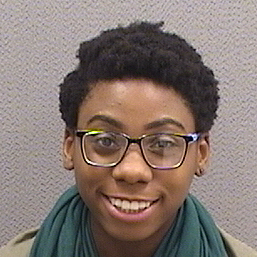Below is a summary of the abstract you submitted. Presenting author(s) is shown in bold.
If any changes need to be made, you can modify the abstract or change the authors.
You can also download a .docx version of this abstract.
If there are any problems, please email Dan at dar78@pitt.edu and he'll take care of them!
This abstract was last modified on May 5, 2017 at 3:44 p.m..

UMBC Phage Hunters sequenced and characterized six bacteriophages as part of the 2016-17 SEA-PHAGES course. Three phi29-like Podoviridae: Harambe, Beachbum, and SerPounce (GenBank accessions: KY821088, KY921761, and KY947509) and a Myoviridae, Flapjack (KY888882) were isolated using Bacillus thurinigiensis subsp. kustaki (Btk). Two Streptomyces Siphoviridae were also characterized. Abt2graduatex2 was isolated on Streptomyces griseus subsp. griseus (S. griseus). Scap1 is the first ever sequenced phage isolated using the potato pathogen Streptomyces scabiei (S. scabiei).
The Podoviridae have linear genomes ranging between 21,054 bp and 27,206 bp long ending in short, inverted repeats. BeachBum, the smallest, has 30 protein coding genes while SerPounce, the largest, has 44. No ncRNA genes have been identified. SerPounce is similar to the previously identified Bacillus phages Stitch, Aurora, MG-B1, and QCM11. BeachBum and Harambe are very similar phages, though quite different from previously identified phi29-like phages. The two phages did not exhibit identical host ranges, with Harambe displaying the wider range. SerPounce had one of the larger host ranges in the class, and was able to infect 80% of the Bacillus cereus (B. cereus) group hosts tested.
Bacillus phage Flapjack shows high sequence similarity to the C3-subcluster phages Typhen and GypsyDanger. It has a linear chromosome 166,137 bp in length with direct terminal repeats, 288 protein coding genes, and no identified ncRNA genes. Flapjack, and other examined cluster C phages, encode an intramolecular chaperone-containing tail fiber protein showing high similarity to the one found in Enterobacteria phage K1F and the intramolecular chaperone domain of the Enterobacteria phage T5 L- shaped tail fiber as well as the PF05895 family of Siphoviridae minor structural proteins. Flapjack demonstrated a limited host range, infecting just half the tested B. cereus group hosts, fewer than 65% of other phages from the same cohort.
Abt2graduatex2 is a member of cluster BG and displays the cluster’s signature prolate head. It has a 57,385 bp circularly permuted genome with 71 called protein coding genes, and shows high sequence similarity to Streptomyes phages Maih, TP1604, and BabyGotBac. Abt2graduatex2 carries a HicA-like toxin gene, though no corresponding anti-toxin has been identified. Abt2graduatex2 lysate was able to lyse S. scabiei, but was unable to produce infectious particles.
Streptomyces phage Scap1 is the first member of cluster BI2. It has a 43,060 bp linear genome with 9 bp 3’-overhangs and 55 called genes. Scap1 lysate was able to lyse S. azureus and S. griseus, but was unable to produce infectious particles.
We report the molecular characterization and genomic analysis of these different phages, as well as comparative genomics analyses to elucidate their phylogenetic context and the function of relevant gene products.


